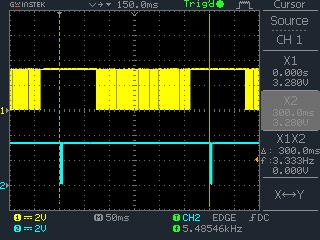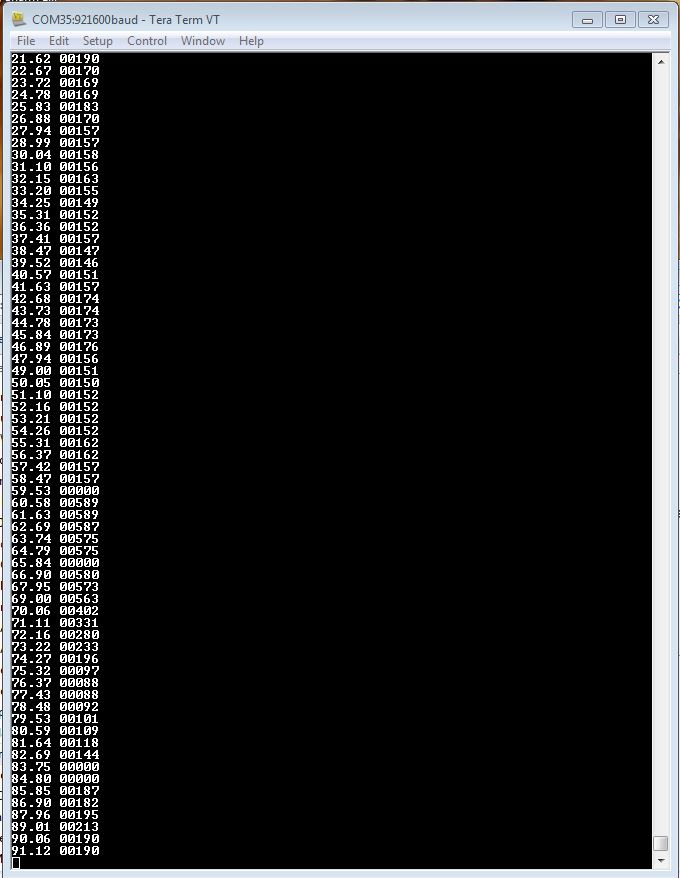Test program for using the Hokuyo URG-04LX LIDAR with the mbed.
Hokuyo Library
This is an example of using the Hokuyo library for the Hokuyo URG-04LX 2 dimensional LIDAR (range finder) with the mbed.

Above is the Hokuyo attached to the mbed WSE Project board (https://developer.mbed.org/users/jebradshaw/code/mbedWSEsbc/). I'm using a xbee form factor RS-232 level converter with a male DB9 (DTE). The on board 5V 1.5A OKI-78SR-5/1.5-W36-C switching regulator is more then sufficient for powering the LIDAR.

O'scope capture of the serial data. This is using a cluster size of 3, about a degree resolution at 19200 baud gives an update rate of about 3.3Hz.

Above is a screen capture of the data being transmitted to Tera-terminal.
include the mbed library with this snippet
// J Bradshaw 20160304 Hokuyo Lidar interface library example
// cluster - groups together points, each point is .351 degrees
#include "mbed.h"
#include "hokuyo.h"
DigitalOut led1(LED1);
Hokuyo lidar(p13, p14); // tx, rx for Xbee header (RS232 board for Hokuyo)
Serial pc(USBTX, USBRX);
int main() {
float scan_width = 180.0; //scan X number of degrees
int cluster = 3; //~degree 1 accuracy with every 3 samples at .351/sample
pc.baud(921600);
if(!lidar.Init())
pc.printf("Hokuyo Init successful\r\n");
else{
pc.printf("Error Initializing Hokuyo!\r\n");
wait(10);
}
while(1) {
if(!lidar.Read_Scan(scan_width, cluster)){ //scan 30deg wide, cluster of 5 points
//pc.printf("total points read = %d\r\n\r\n", lidar.numPts);
for(int i=0;i<lidar.numPts;i++){
pc.printf("%5.2f %05d\r\n", lidar.angle[i], lidar.dist_mm[i]);
wait(.0001);
}
led1=!led1;
}
else
pc.printf("Error Scanning Hokuyo!\r\n");
}
}